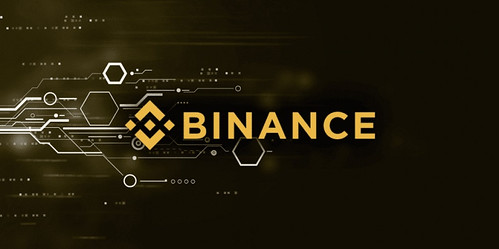Main Points:
- Binance co-founders firmly refute persistent rumors of the exchange being sold.
- Misinterpretation of asset management changes has fueled unfounded speculation.
- Asian competitors are accused of deliberately spreading FUD (Fear, Uncertainty, and Doubt) to undermine Binance.
- Official statements clarify that changes in financial reporting are not indicative of a sale.
- Binance remains open to strategic investments and acquisitions, not divestitures.
- Industry influencers and social media figures have weighed in, sometimes humorously, on the situation.
- Recent market developments and evolving blockchain trends underscore the dynamic nature of crypto exchange strategies.
I. The Beacon of Crypto Innovation
Binance, founded by Zhao “CZ” Changpeng and Yi He, has grown into the largest and one of the most influential cryptocurrency exchanges in the world. Renowned for its cutting-edge technology, robust trading infrastructure, and diverse digital asset offerings, Binance has been a key player in the evolution of blockchain technology and the broader crypto ecosystem. In recent times, however, rumors have swirled around the exchange, suggesting that it might be on the verge of a major sale. These speculations have caused unease among traders and investors alike, especially those who continuously scout for new crypto assets and emerging revenue streams in the ever-shifting blockchain landscape.
II. The Emergence of Sale Rumors: A Misinterpretation of Strategic Moves
The genesis of the sale rumors can be traced back to observations within the market. Some users noted changes in Binance’s digital asset holdings and a slight reduction in certain asset classes. This shift, which was part of an internal recalibration of financial and accounting practices, was misinterpreted by some as a sign that Binance was preparing to divest or sell its flagship exchange. Such misinterpretations have given rise to a wave of FUD—an acronym for Fear, Uncertainty, and Doubt—that quickly spread across crypto forums and social media platforms.
Market speculators began to connect these changes with the possibility of a sale, prompting an influx of commentary and, in some cases, alarm. The narrative was that a major divestment could signal either financial distress or a strategic exit, which would have far-reaching implications for the global crypto market. As a result, the news cycle became rife with uncertainty, drawing attention away from the genuine innovations Binance was championing.
III. Official Denials: Statements from Co-Founders CZ and Yi He
Amid the storm of rumors, both co-founders of Binance were quick to issue clear and forceful denials. Zhao Changpeng, the face of Binance and one of its principal shareholders, categorically stated that the rumors of a sale were baseless. He attributed the spread of these speculations to actions by certain competitors—specifically, he pointed to “self-proclaimed low-level rivals” in the Asian market. According to CZ, these competitors had deliberately fanned the flames of FUD, hoping to unsettle the confidence of investors and users in Binance.

Yi He, the other co-founder, echoed CZ’s sentiment in her public statements. She underscored that the ongoing changes within Binance’s financial management were solely part of an internal reorganization aimed at improving accounting transparency and operational efficiency. In her remarks, Yi He also emphasized that rather than selling, Binance was actively exploring opportunities to acquire or merge with other entities, aligning with its long-term strategic vision of growth and innovation.
IV. Industry Reaction: From Skeptical Comments to Humorous Quips
The response from the broader crypto community was as varied as it was vocal. One of the notable reactions came from Charles Hoskinson, the founder of Cardano. In a light-hearted tweet, Hoskinson mentioned that even Elon Musk, often associated with quirky comments on crypto matters, seemed relieved by the news that Binance was not up for sale. This humorous interjection provided a welcome counterpoint to the serious tone of the speculation, suggesting that industry leaders recognized the baseless nature of the rumors.
Social media platforms, particularly Twitter and X, buzzed with discussions that ranged from analytical breakdowns to witty memes. Influential crypto analysts and investors weighed in on the potential impacts of such rumors, often agreeing that the motivations behind these speculations were rooted more in competitive posturing than in any substantive evidence of financial instability within Binance.
V. Financial Strategy and Accounting Adjustments: The Real Story Behind the Numbers
The core of the confusion appears to lie in recent changes to Binance’s financial reporting and asset management strategies. In an increasingly competitive market, it is not uncommon for leading companies to adjust their internal processes to enhance transparency and streamline operations. Binance’s decision to update its financial accounting processes was part of a broader effort to adapt to regulatory changes and market demands.
These adjustments, while significant from an operational standpoint, were misconstrued by some as an indication of impending major corporate restructuring or even a sale. However, the official narrative clarifies that these changes are intended to optimize the exchange’s internal financial oversight rather than to signal a strategic exit. For traders and investors, understanding these nuances is essential; a refined accounting process can lead to better risk management and improved operational efficiency, thereby strengthening the overall market position of the exchange.
VI. The Role of Competitors: FUD as a Tactical Weapon
A critical aspect of the rumor mill was the suggestion that certain competitors in the Asian market were intentionally spreading disinformation. According to CZ, these rival firms sought to destabilize Binance by fueling narratives of uncertainty. By promoting the idea that Binance was either financially distressed or preparing for a sale, these competitors hoped to erode investor confidence and create opportunities to capture market share.
This strategic use of FUD is not unique to the crypto industry; it is a tactic that has been observed in various competitive sectors worldwide. In the context of the digital asset market, where sentiment and perception play a pivotal role in determining asset values, even the slightest hint of uncertainty can have amplified consequences. Binance’s decisive response to these claims not only reassured its user base but also served as a reminder of the robustness of its business model.
VII. Strategic Investments Versus Divestitures: Binance’s Forward-Looking Vision
Beyond denying the rumors of a sale, both co-founders emphasized Binance’s ongoing strategic initiatives that point towards future growth rather than contraction. In a world where innovation is the key to staying ahead, Binance has continuously demonstrated its commitment to expansion. Rather than selling off its flagship exchange, the company has expressed interest in engaging with top-tier investors and potentially facilitating minor percentage investments from institutional players.
These potential investments are seen as opportunities to further enhance the platform’s capabilities, foster innovation, and expand the global reach of its services. In this light, the talk of a sale is rendered even more implausible. The focus, as articulated by both CZ and Yi He, is on leveraging strategic acquisitions and partnerships to build a stronger, more resilient ecosystem that can adapt to the ever-changing demands of the crypto market.
VIII. Recent Developments in the Crypto and Blockchain Ecosystem
While the sale rumors have now been firmly debunked by Binance’s leadership, they serve as a useful case study in the volatility and rapid information shifts that characterize the crypto industry. Recent months have witnessed a host of developments that underscore the dynamic interplay between regulatory changes, market sentiment, and technological innovation.
For instance, the broader blockchain industry has seen increasing interest in decentralized finance (DeFi) and non-fungible tokens (NFTs), which are reshaping traditional financial paradigms. Major crypto exchanges, including Binance, have been at the forefront of integrating these emerging technologies into their platforms. Such initiatives are critical for maintaining relevance in a highly competitive market, and they illustrate that Binance’s strategic focus is firmly on growth and technological advancement.
Additionally, regulatory scrutiny around the globe has led to an overhaul of compliance practices across the industry. Binance, like many of its counterparts, is continually adapting its operational strategies to meet new regulatory requirements. This proactive approach not only ensures legal compliance but also contributes to the exchange’s reputation as a stable and reliable player in the crypto market.
IX. A Robust Future Amid Rumors and Rivalry
In summary, the recent rumors of Binance planning to sell its exchange have been unequivocally dismissed by its co-founders, CZ and Yi He. The speculations, which originated from misinterpretations of accounting changes and were amplified by competitive rivals in the Asian market, have been shown to be unfounded. Instead of preparing for a divestiture, Binance is poised to further invest in its growth, focusing on strategic acquisitions and partnerships that will cement its position as a leader in the global crypto ecosystem.
For those seeking new digital assets or the next lucrative opportunity in blockchain technology, this episode offers several lessons. It highlights the importance of verifying information, understanding the strategic context behind financial decisions, and recognizing that market rumors—especially those driven by competitors—may not always reflect the underlying reality.
Binance’s robust response to the rumors serves as a testament to its enduring vision and commitment to innovation. By clarifying its financial strategies and emphasizing a future of expansion rather than contraction, Binance not only calms the waters of uncertainty but also sets a precedent for transparency and resilience in an industry often beset by rapid and unpredictable change.
As the crypto landscape continues to evolve, investors and users alike should remain vigilant and discerning. The ability to differentiate between genuine strategic shifts and opportunistic rumor-mongering is crucial in navigating the complexities of this fast-paced market. In the end, Binance’s steadfast approach to growth and innovation underscores a broader trend in the blockchain industry—a trend defined by constant adaptation, strategic foresight, and the relentless pursuit of excellence.


